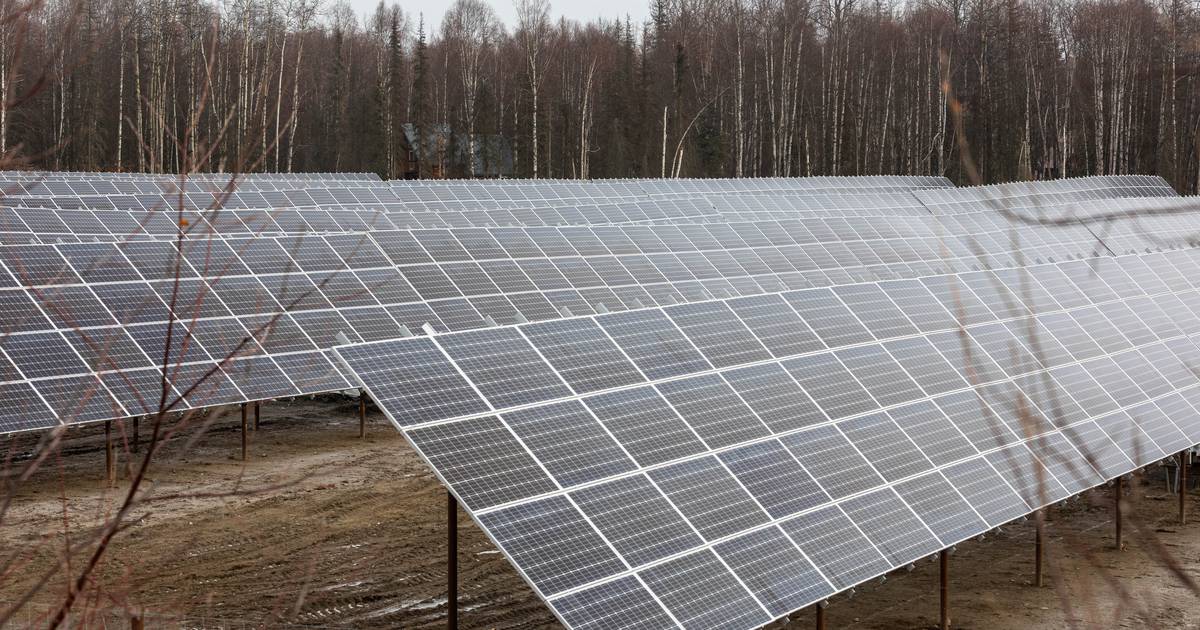:quality(70)/cloudfront-us-east-1.images.arcpublishing.com/adn/4NOKFXFDCRAZHGNXMBFLDUDTPY.jpg)
The Willow Solar Farm in the Susitna Valley. (Loren Holmes / ADN)
I recently read this opinion piece by Rick Whitbeck. I was struck by the frustration he has with renewable energy and how he resorts to calling democratically elected members of Alaska electric co-ops “eco-extremists.” Mr. Whitbeck complained about the low voter turnout for the Chugach and other electric co-op elections where rate-payers voted in people he didn’t agree with. I concur with his complaint about low voter turnout. It would be wonderful to see more rate-payers coming out for these important elections. However, I wouldn’t be surprised if his effort to encourage voter turnout isn’t working out because the arguments he’s presenting are falling flat with Alaskans because we don’t listen to name-calling. We listen to facts.
The facts are that renewables, specifically solar and wind, are cost-effective with current technology . These energy sources are powering Alaska right now from solar panels and wind turbines in Kotzebue, geothermal power at Chena Hot Springs , and hydropower providing almost a third of Alaska’s electricity . New technologies are being explored and implemented right now for tidal energy, wave energy, off-shore wind, and nuclear power, which all have the possibility of heating our homes far into the future. Given how quickly wind and solar has become economically viable in the last decade, I’m personally optimistic at the potential for these other sources to become viable over the coming years as well.
Mr. Whitbeck also complains about the “eco-left” pushing green energy onto the public, but renewables, particularly wind, are being rapidly developed in Republican states more than anywhere else. Most notably, Texas has the most wind power developed out of any other state in the nation, almost triple the amount produced by the second-largest producing state of Iowa. This massive development occurred at least in part because state policy encouraged it through the free market . Landowners were given tax incentives to develop wind energy on their property as they see fit. The governing utility, following the direction of the state, then went on a building spree of the transmission infrastructure connecting these new wind turbines to the grid. Renewable energy is something we all want to see on both sides of the aisle, and we can build it with good leadership and hard work.
There are reasonable concerns as we continue to develop renewable energy. How will we provide reliable power? Who will be the workforce to build and maintain this infrastructure? How will these new technologies affect wildlife and the land? However, these are important challenges to meet and secure the energy supply for our future grandchildren long after we run out of oil. This is a difficult issue that we all need to work together on to figure out how we’re going to accomplish this as a state. Name-calling and rejecting bipartisanship is not what built the pipeline and will not be what builds the next Alaskan energy grid.
Tvetene Carlson was born and raised in Cantwell, is an alumni of the University of Alaska Anchorage and is currently an environmental engineering Ph.D. student at the University of California Berkeley studying tidal renewable energy.
The views expressed here are the writer’s and are not necessarily endorsed by the Anchorage Daily News, which welcomes a broad range of viewpoints. To submit a piece for consideration, email . Send submissions shorter than 200 words to or click here to submit via any web browser . Read our full guidelines for letters and commentaries here .

